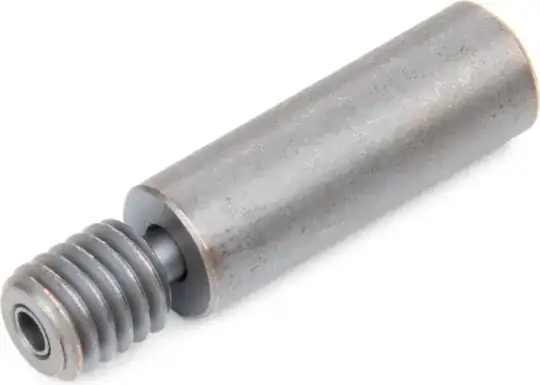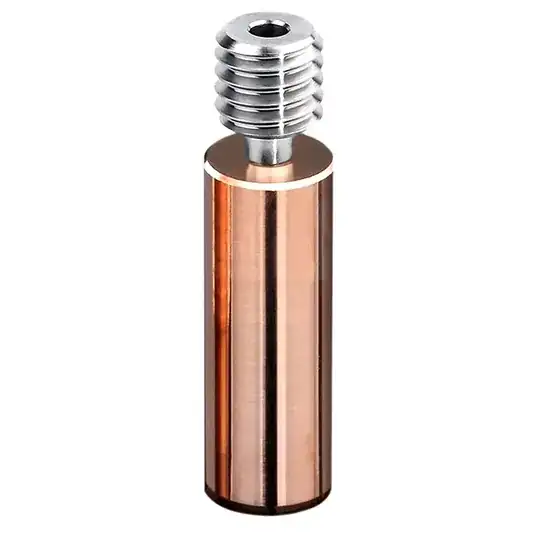I just replaced my PTFE-lined heatbreak with a Slice Engineering Copperhead, and am mostly happy with the results, but in the process of buying it and learning not to jam it, I came across with another design that seems common in cheap "clone" bimetal heatbreaks, and I'd like to understand the differences.
The Copperhead has (coated) copper for both the threaded part of the heatbreak that goes in the block, and the larger part that goes in the heatsink, with a thin stainless steel tube running through both:
In particular, it has an external lip of sorts where it meets with the nozzle. My understanding is that the copper in the upper part is to better dissipate heat, while the copper in the lower part is to make it part of the melt zone, giving a longer overall melt zone.
The other design I've seen has only two pieces: a stainless steel or titanium alloy part that threads into the heat block, press fit into the larger copper part that goes in the heat sink:
Since the tube and threads are all one piece, there's a nice looking chamfer where the filament exits the heatbreak and enters the nozzle. As an example, see this product listing, though there are lots of similar ones.
Presumably this alternate design has worse melt performance, but does it have advantages too? Less heat creep? Fewer jams due to the chamfer? Better mating with the wider, 3-part opening of CHT nozzles? Are any of these design differences well-motivated engineering decisions, or just chosen for cheap manufacturing?

